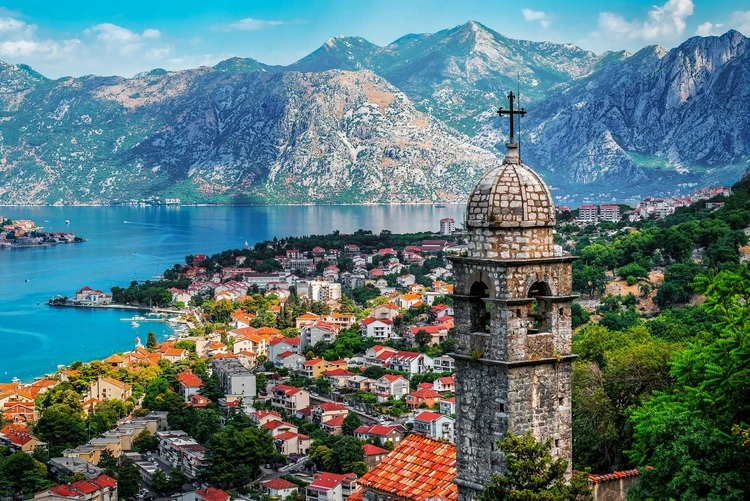
The new nations that have been formed in recent decades
By
Throughout history, countries have come and gone. Today, a commonly accepted definition of statehood is recognition by the United Nations. The UN currently recognises 195 sovereign nation-states – the 193 member states and two ‘observer states’, the Vatican and Palestine.
Some entities, such as Taiwan, Kosovo, and Western Sahara, are not universally recognised as independent states and have limited or contested recognition.
The definition of statehood was laid down in the Montevideo Convention in 1933, which said a state must have a permanent population, defined borders, a government and the capacity to have relations with other states.
Here are the six countries that have most recently joined the exclusive club of nation-states – not all of which are universally recognised.
6) Palau – 1994

Palau – officially known as the Republic of Palau – is an island nation in the Western Pacific Ocean. Made up of 340 coral and volcanic islands, it is approximately 550 miles (890km) from the Philippines and 400 miles (650km) from New Guinea and has a population of around 21,000 people.
Enjoying this article? Check out our related reads:
Back in 1947, Palau was a member of the UN Trust Territory of the Pacific Islands, but this was dissolved in 1986. Eventually, Palau became a sovereign state in October 1994.
Today, the country relies on the US for financial aid, under what is known as a Compact of Free Association. Such an agreement requires the US to be responsible for Palau’s defence and the US has military bases in the country.
Despite the country’s relatively small size, it is making big waves in climate activism. In 2011, Palau banned commercial shark fishing and created the world’s first shark sanctuary, while in 2020, it banned coral reef-toxic sunscreens and prohibited fishing in 80 per cent of its exclusive economic zone.
5) East Timor – 2002

East Timor, also known as Timor-Leste, has faced a long battle for independence. First colonised by the Portuguese for hundreds of years – who eventually withdrew in 1975 following a military coup – the country then faced Indonesia invading and annexing the territory as its 27th province, a move not recognised by the UN. An estimated 200,000 people are believed to have died following the invasion of Indonesian forces in the region from extensive fighting, massacres and famines within detention camps.
In 1999, a ballot held under the UN showed that 78.5 per cent of East Timorese were in favour of independence. Terror quickly ensued following the vote as Indonesian-backed militia groups went on the rampage, killing 2,600 people and forcing almost 30,000 to flee their homes.
In 2002 formal independence was established for East Timorese.
4) Serbia – 2006

Until 1992, Serbia was parted of Yugoslavia – formed of Serbia, Montenegro, Slovenia, Croatia, Bosnia-Herzegovina and Macedonia. Countries began to splinter off from the union – first Slovenia and Croatia, followed by Macedonia and Bosnia and Herzegovnia.
With just two countries left, Yugoslavia renamed itself as the State Union of Serbia and Montenegro. Back in 2006, Serbia became a sovereign state following a vote in Montenegro that called for independence from the Union of Serbia and Montenegro.
3) Montenegro – 2006

Montenegro is another country which gained its independence following the fall of Yugoslavia. In a 2006 referendum, more than 55 per cent of its population voted for independence, marking the end of its union with Serbia.
Although Montenegro’s political elite had hoped to quickly join the EU following its new status as an independent state, its application lodged back in 2008 has still yet to prove successful. Accession talks were held in 2012, but factors including a lack of political will from existing member states to expand the bloc, along with the slow construction of transparent democratic institutions, have made it hard for the country to join the union.
However, the country is currently part of NATO, joining back in 2017, a move that allowed NATO to strengthen its presence within the Adriatic Sea.
2) Kosovo – 2008 (partially recognised)

In 2008, Kosovo declared its independence after tensions between its Serbian and Albanian citizens, a move which has been recognised by total of 99 UN countries – the majority of European states along with countries including the US, Canada, and Japan. Still, some nations do not recognise its independence, including Serbia – whose current president has vowed the country will never do so and Russia
Tensions still continue in Kosovo among ethnic Serbs, who oppose the Kosovo government’s policies in asserting their authority across the whole country and instead want to retain autonomy. Under such pressure, more than 10 per cent of Kosovo’s Serbs have emigrated in the last year alone.
In 2022, Kosovo formally applied to join the EU.
1) South Sudan – 2011

South Sudan is the world’s newest nation and Africa’s 54th country, founded in 2011 after separating from Sudan. Its independence marked the end of Africa’s longest civil war, although conflict did not end in the region once it had gained its independence.
Tensions in the region due to a fall-out between rival factions of the Sudan People’s Liberation Movement (SPLM) have led to continued conflict and devastation in the region, displacing millions and leaving many vulnerable to the impacts of a ‘man-made’ famine caused by the civil war.
So severe is the humanitarian crisis in South Sudan that in this year’s lean season (the period between harvests) – stretching from April to July 2024 – an estimated 7.1 million individuals of the 12.4 million population required food assistance.
South Sudan is also extremely vulnerable to the impacts of climate change, having experiencing two severe droughts and seven floods that have led to high fatalities, displacements and loss of livestock.
The country’s economy has also plunged into a steep downfall, with the South Sudanese pound losing nearly 95 per cent of its value.



